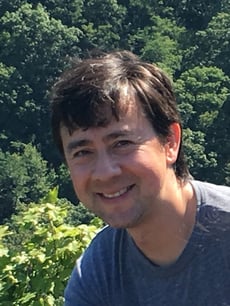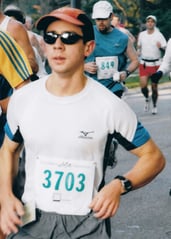Career Perspectives: Interview with Sam Hsiao, Associate Director, Strategic Consulting

At Cytel our strategic consulting team works on a wide range of projects including: Identifying the best clinical trial design, implementing adaptive designs, developing a regulatory strategy and interacting with regulators.
In this blog we talk to Sam who lives in the Boston area, to find out more about his career path, current role at Cytel, industry experience and his interests outside of work.

 How did you identify Biostatistics as the right career for you?
How did you identify Biostatistics as the right career for you?
My PhD training was in mathematics. I worked in academia doing research and teaching math and statistics for several years before transitioning to a career in the biopharmaceutical industry. The move made sense as a way to focus on my interests in health care, but it also seemed risky to give up tenure and plunge into relatively unfamiliar territory. Having now worked for a few years in the industry, I have been involved in planning or implementing dozens of clinical trials. Collaborating with scientific teams across different domains often pushes me outside my comfort zone and gives me fresh insights. The methodological challenges within biostatistics are also exciting. There is plenty to keep me engaged and motivated.
What is your current role?
I am Associate Director in the strategic consulting group. I help sponsors with a wide range of statistical activities related to study planning and analysis. This can include detailed statistical work such as modelling and simulation, or high level input to development strategies or regulatory interactions. I also do research and present the findings at conferences representing Cytel.
What are the main challenges pharmaceutical and biotech companies face when designing and implementing a clinical trial?
Much of my experience is with small to mid-sized biotech companies who are developing cutting edge products with limited resources in a competitive environment. They are constantly trying to do more with less as they look for ways to use their time and data as efficiently as possible. Companies may need to apply available design tools in creative ways to address their particular issues with regard to timelines, endpoints, doses, manufacturing, recruitment, etc. Their work often pushes the boundaries of the industry’s collective experience. As such, ensuring the study design meets their development and scientific objectives while also satisfying regulatory and institutional reviewers can be difficult. Getting buy-in from a study’s multiple stakeholders can also be challenging, requiring not just good statistics, but also close attention to external constraints that may limit their design options.
What regulatory aspects do sponsors need to consider when using innovative designs?
Sponsors should be aware of regulatory guidance documents relevant to the therapeutic areas and design strategies they are considering. As the industry gains experience with various types of adaptive designs, clearer guidelines are emerging in formal documents and informally among subject-matter experts who frequently interact with regulators. For innovative designs it will often be necessary to document statistical characteristics through simulations to give regulators confidence in the statistical design. For pivotal studies, it is particularly important to demonstrate to regulators that appropriate communication firewalls are in place to minimize bias. Regulators can be quite open to new and innovative approaches, provided there is sound rationale and integrity of the study is preserved.
What most inspires you about working within this field?
Being involved in bringing life-changing medicines to people is inspiring. Much of my work has been in oncology, where the unmet need remains acute despite the significant continuing advances. The field is dynamic and complex. The challenges of each project are very engaging intellectually. I learn from doctors and scientists with deep knowledge of particular disease areas, and from other statisticians with perspectives and expertise that are different than mine.
What would be your three top tips for early career statistician looking to develop in this field?
- Think beyond statistics. Learn as much as you can about the health care domains you are working in, to better appreciate the problems you are trying to solve.
- Step outside your area to see what other statisticians are working on. Good ideas often come from unexpected places.
- Practice communicating your work to non-technical colleagues. Effective communication is an important component of developing strong professional relationships and for most of us it requires deliberate practice.
What are your personal values?
I value openness to different ways of thinking and expression.
 What are your main interests outside of work?
What are your main interests outside of work?
I have a casual interest in visual arts and jazz. I am also an avid runner. Years ago I qualified for the Boston Marathon, but didn’t get a chance to compete. Now I’m older and slower, but hope to requalify and run in this exciting race.
Thank you for taking the time to talk to us and sharing your journey.
Careers
Cytel biostatisticians and programmers are active and well regarded in industry associations and communities around the world. Would you like to join our talented team? We have roles for statistical programmers at all levels across our global locations. To find out more about rewarding careers with us click below.


